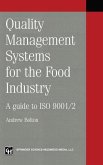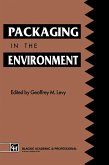1 Principles and applications of hurdle technology.- 1.1 Introduction.- 1.2 Examples of the hurdle effect.- 1.2.1 Fermented foods.- 1.2.2 Shelf stable products (SSP).- 1.2.3 Intermediate moisture foods (IMF).- 1.3 Behaviour of microorganisms during food preservation.- 1.3.1 Homeostasis of microorganisms.- 1.3.2 Multi-target preservation of foods.- 1.3.3 Stress reactions and metabolic exhaustion.- 1.4 Total quality of foods.- 1.4.1 Optimal range of hurdles.- 1.4.2 Potential safety and quality hurdles.- 1.4.3 User guide to food design.- 1.5 Application of hurdle technology in less developed countries.- 1.5.1 Fruits of Latin America.- 1.5.2 Dairy product of India.- 1.5.3 Meat products of China.- 1.6 Future potential.- References.- 2 Bacteriocins: natural antimicrobials from microorganisms.- 2.1 Introduction.- 2.1.1 Historical.- 2.2 Bacteriocin structure and function.- 2.2.1 Lantibiotics.- 2.2.2 Small heat-stable bacteriocins.- 2.2.3 Large heat-labile bacteriocins.- 2.3 Genetics of bacteriocins from LAB.- 2.3.1 Genetic organization of bacteriocin operons.- 2.3.2 Genetic location of bacteriocin genes.- 2.4 Application of bacteriocins in food systems.- 2.4.1 Dairy industry.- 2.4.2 Canning industry.- 2.4.3 Meat industry.- 2.4.4 Wine and beer.- 2.4.5 Sauerkraut.- 2.5 Future prospects for bacteriocins.- References.- 3 Natural antimicrobials from animals.- 3.1 Introduction.- 3.2 The phagosome.- 3.3 Antibiotic peptides.- 3.3.1 Biological role.- 3.3.2 Chemical attributes and spectrum of action.- 3.4 Protein amendment and production of antibiotic peptides.- 3.4.1 Iron.- 3.4.2 Avidin.- 3.5 The lactoperoxidase system (LPS).- 3.6 Lysozymes.- 3.7 Prospects.- References.- 4 Natural antimicrobials from plants.- 4.1 Introduction.- 4.2 Phytoalexins.- 4.3 Organic acids.- 4.4 Essential oils.- 4.5 Phenolics, pigments and related compounds.- 4.5.1 Factors affecting antimicrobial action.- 4.6 Modes of action.- 4.7 Health and legislative aspects.- 4.8 Conclusions.- References.- 5 Food irradiation: current status and future prospects.- 5.1 Introduction.- 5.2 Development of national regulations.- 5.3 Technical advantages and limitations of food irradiation.- 5.3.1 Techno-economic advantages.- 5.4 Limitations of food irradiation.- 5.4.1 Technical.- 5.4.2 Infrastructure and economics.- 5.4.3 Consumer concerns.- 5.5 Consumer acceptance of irradiated food.- 5.5.1 Consumer attitude surveys.- 5.5.2 Market testings and retail sales of irradiated food.- 5.6 Commercial applications of food irradiation.- 5.7 International co-operation in the field of food irradiation.- 5.7.1 Co-operation among FAO, IAEA and WHO.- 5.7.2 Co-operation with the Codex Alimentarius Commission.- 5.7.3 Co-operation leading to international trade in irradiated food.- 5.8 Conclusions.- References.- 6 Microwave processing.- 6.1 Introduction.- 6.2 Introduction to microwaves and their interaction with food materials.- 6.2.1 Basics.- 6.2.2 How microwaves heat.- 6.2.3 Power absorption.- 6.2.4 Uniformity of heating.- 6.2.5 Material properties.- 6.3 Microwaves and microorganisms.- 6.3.1 Early work (1940-55).- 6.3.2 Renewal of interest in the 1960s.- 6.3.3 Conclusion.- 6.4 Microwave processing equipment.- 6.4.1 The benefits of microwave processing.- 6.4.2 Current status of microwave processing in food industry applications.- 6.4.3 Microwave patents in preservation.- 6.5 Case histories.- Case history 1 Green tea drying/roasting system with microwave and far infra-red techniques.- Case history 2 Drying of pharmaceuticals.- Case history 3 Pasteurisation of fruit and sugar mixture.- Case history 4 Sterilisation after packaging of pasta products.- Case history 5 Pilot plant microwave sterilizer.- 6.6 The future.- References.- 7 Hydrostatic pressure treatment of food: equipment and processing.- 7.1 Introduction.- 7.2 General description of an industrial high pressure system.- 7.2.1 The high pressure vessel and its closure.- 7.2.2 Pressure generation.- 7.2.3 Temperature control.- 7.2.4 Material handling...








